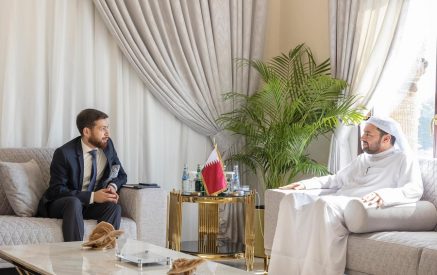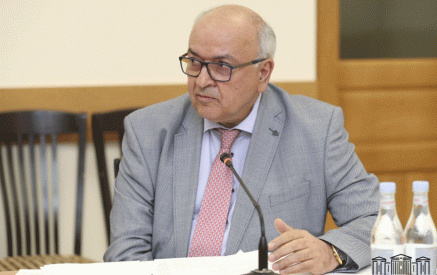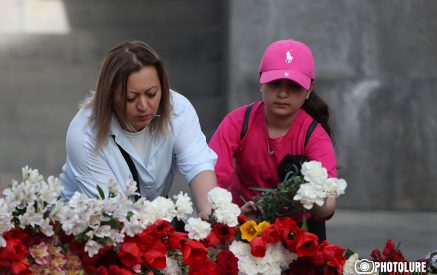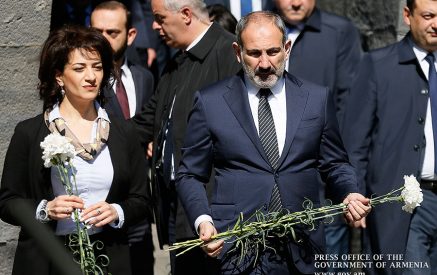Year in and year out, Armenia is “buried” in debts. Armenia’s foreign debt has reached 3.7 billion dollars. The government has again issued 500 million dollar euro bonds, at 7.5%. This, in fact, is a new debt, part of which will be directed at repayment of a part of 700 million dollars loan received again through Eurobonds in 2013, and the other part will be directed to filling in the gap of the tax funds not collected in the budget.
“Aravot” asked the World Bank Country Manager in Armenia Laura E. Bailey about how she will estimate the policy of the Government of Armenia, according to which, a new debt is involved to repay a part of the earlier debt, and whether Armenia’s foreign debt is in the dangerous threshold. “You know what, the question about which is the general acceptable level of Armenia’s foreign debt, it is not associated with numbers, but a matter of proportion, the proportion of this external debt is associated with general economic activity, in other words, a debt-to-GDP (gross domestic product) ratio. The matter is as follows: what for this debt money is used. Are these funds used to boost production and incomes and get out of the current difficult economic situation?” so commented Ms. Bailey to our question.
As for the Eurobonds, Ms. Bailey said, “I personally do not have any opinion related to Eurobonds. We are working with the government in the framework of this comprehensive general program when it comes to funding loans and grants. The problem is as follows: on what the government will use the amounts for the debt received from Eurobonds or any other source. They use the Eurobonds for 2 purposes – apart of the loan will be used to pay off the former debts, and the other part will be used to fill the fiscal gap that will emerge this year due to weakened economy.” When there are no means to service the debts, the economic growth is slowed down, as noted by the economists, the government has to issue bonds, of which the money received is directed at paying off the debt.
Prior to asking our question to Ms. Bailey, regarding the projection of Armenia’s economic growth, she told that it is revised. “Armenia’s economic growth will be very, very, very little. It is possible to have a positive tendency – 0.8%. This positive tendency of 0.8% can become negative if significant shocks occur.” The World Bank Country Manager in Armenia has said that possible shocks may occur as a result of downturn of general economic situation in Russia and Europe, but the greater part of effect of upheavals may occur due to downturn of Russia’s economy. Again referring to the issuance of Eurobonds and disposition of the funds received from it, Ms. Bailey said to “Aravot,” “I will allow that the Central Bank and the International Monetary Fund, who would discuss these issues with the government, focus on this issue so that they would turn their attention to this very issue. Anyway, we can say that the funds received from the Eurobonds are very important to be used in two ways: to stimulate economic activity in the country and to provide the revenues received from the sale of these bonds to assist the poorest and vulnerable segments of the population.”
Read also
In the interview with “Aravot”, economic-affairs Commentator of “Haykakan Zhamanak” newspaper, Hayk Grigoryan, said that the government has issued and distributed 500 million dollars of Eurobonds, and contextually, it meant taking a loan. This 7.5% of loan, according to Gevorgyan, is one of Armenia’s involved most expensive loan, if not the most expensive. “It is noteworthy that the percent of the loan taken in 2013 was 6.25 percent. So, it turns out that we have taken a loan of 7.5% to pay off a part of the 6.25 per cent loan. This no way can be considered an effective use of the loan. We are simply entering a loan turmoil. That is to say we are getting to take more and more expensive loans to pay of the former cheaper loans.” Gevorgyan also noted that the size of the debt is not a problem, the problem is in its use. “If this will result in technological boom in Armenia, then the size is not a problem, including the percentage, but our debts taken are simply evaporating. I will bring the Europe as an example, where the gas price is 2-3 times higher, but the cost of tomatoes grown in the greenhouse is twice cheaper than in Armenia”.
Hayk Grigoryan expressed concern that the funds received from the Eurobonds will be spent by the government in a way that a few years later we will have to take a new, more expensive loan to pay off this one. “If the government reduces senseless and huge expenses, the need to attract external debt will decrease significantly. And generally, should our government work efficiently, Armenia’s economy would be much more advanced.”
Nelly BABAYAN



























































